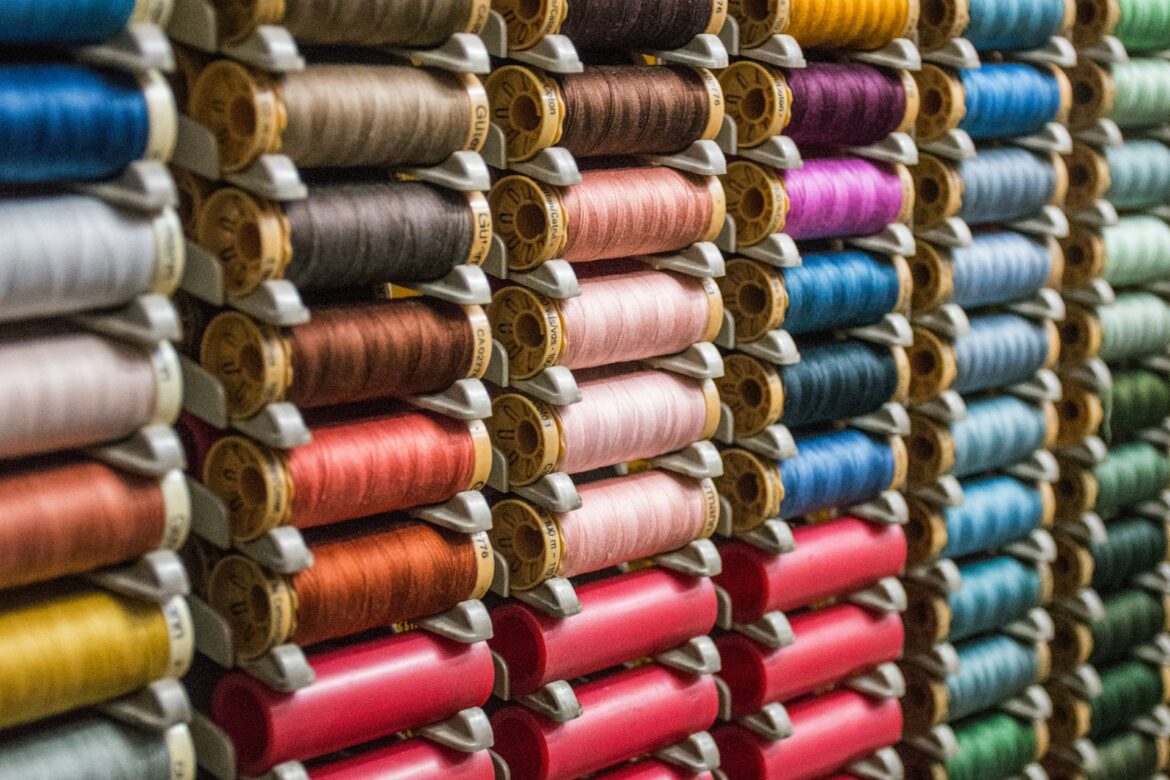Latvian textile art represents more than just fabric — it’s a living history of identity and culture. Every stitch and symbol carries meaning that has passed from generation to generation. Ancient weaving techniques, once used for everyday life, have transformed into forms of modern artistic expression. Folk traditions still influence fashion, art, and even political identity in Latvia today. Many modern designers continue to honor these traditions while adding their personal, creative vision. In this way, the art form grows stronger with each reinterpretation, not weaker. It remains rooted in the past but stretches confidently into the future. From ceremonial costumes to runway collections, Latvian textile art continues to evolve.
Folk Costumes: Cultural Roots in Every Thread
Traditional folk costumes form the heart of Latvian textile art. Each region in Latvia—Vidzeme, Latgale, Kurzeme, and Zemgale—has its own unique patterns and colors. The costumes were never just for decoration. They told stories about a person’s status, age, region, and beliefs. Symbols on belts or sleeves could act as protection or express a prayer. Wearing these garments helped people feel connected to their ancestors and to the land. Red and white patterns, often seen in belts, are among the most well-known symbols in Latvian design. These patterns usually represent the sun, earth, or fertility. Even today, these symbols appear in national events and modern clothing.
Regional costume highlights:
-
Vidzeme: deep reds, geometric belts, linen blouses
-
Kurzeme: richly decorated skirts, amber jewelry
-
Latgale: more floral and curved motifs
-
Zemgale: wide belts, simple yet bold patterns
Although many garments are visually striking, their construction is equally impressive. Skilled weavers created them using hand-operated looms, often working by candlelight. The process was long, but each piece held personal meaning. Women made their own costumes and passed them down to daughters. Today, folk costumes still appear during festivals and national holidays. Wearing one is not a costume — it’s an act of cultural pride and continuity. This deep respect for heritage continues to shape how people view Latvian textile art.
Weaving Techniques and Symbolic Designs
Latvian textile art depends on both material and message. Traditionally, artisans used natural fibers like wool, flax, and linen. They spun these fibers by hand and dyed them with plants, roots, or bark. The process required deep knowledge of nature and timing. For example, the same plant could produce different colors depending on the season or soil. This made every piece slightly different and deeply connected to its environment.
Many traditional designs follow geometric patterns. Squares, crosses, spirals, and stars all appear repeatedly, each carrying specific meaning. A repeated sun symbol might represent life and hope. A zigzag could mean water or transition. Weavers didn’t just make cloth—they told stories, sent prayers, and recorded knowledge. In fact, many historians consider these textiles as a kind of visual language. The famous Lielvārde belt, for instance, contains over 70 distinct symbols. Some believe they carry ancient messages or even sacred meanings.
Common symbolic patterns:
-
Sun: life, vitality, spiritual growth
-
Cross: balance, harmony, protection
-
Spiral: change, fertility, cosmic rhythm
-
Zigzag: water, energy, motion
Even as industrial fabric became more common, families preserved these techniques. Grandparents taught younger generations to weave, dye, and understand the symbols. Some communities still host workshops or camps focused on traditional weaving. These spaces offer more than skills—they offer connection. In them, Latvian textile art lives on, thread by thread.
Beadwork and Decorative Accents
While weaving forms the base, beadwork adds richness and detail to Latvian textile art. Beads were used for both decoration and meaning. Early materials included amber, bone, wood, and glass. These beads often formed patterns on blouses, cuffs, or headpieces. Like woven symbols, beadwork often followed geometric or nature-inspired shapes. Each pattern could symbolize health, prosperity, or spiritual protection.
Modern artists continue this tradition in fresh ways. Some designers use beadwork to elevate everyday clothing, while others apply it to jewelry and accessories. Handmade crowns with beaded patterns have become popular in both cultural and fashion circles. These crowns, once worn only by unmarried women during festivals, now appear in weddings, photoshoots, and fashion shows. The appeal is clear: they blend beauty, tradition, and storytelling in one wearable form.
Beadwork in modern use:
-
Festival crowns for weddings or national days
-
Beaded jewelry with folk-inspired motifs
-
Embellished garments for everyday or special wear
What’s special is how this craft adapts. Artists respect tradition but don’t feel limited by it. Instead, they use beadwork as a way to honor the past while exploring new styles. In doing so, they keep Latvian textile art fresh, relevant, and deeply expressive.
From Village Loom to Global Runway
Today’s designers use Latvian textile art in exciting new ways. Some fashion houses take traditional patterns and apply them to dresses, coats, or even shoes. Others use traditional fabrics like linen and wool but cut them into modern silhouettes. This balance between old and new gives their work depth and originality. Many of these designers also care deeply about sustainability, choosing slow production methods and natural materials.
What makes their work so compelling is its connection to heritage. Whether they use ancient symbols or regional patterns, each piece tells a story. These garments go beyond fashion—they speak about identity, memory, and place. Some creators even work with local weavers or textile cooperatives to keep traditional skills alive. This cooperation helps rural communities while enriching modern design.
Contemporary features:
-
Linen dresses with woven trims or belts
-
Modern jackets embroidered with folk symbols
-
Designer collections inspired by regional color palettes
As a result, Latvian fashion has gained international attention. Designers showcase their work at fashion weeks and cultural exhibitions. Some brands focus on export, introducing Latvian textile art to audiences abroad. Others stay rooted locally, serving communities that cherish handmade, meaningful garments. In both cases, tradition and innovation walk side by side.
Cultural Events and Educational Revival
Latvian festivals are essential for keeping textile traditions alive. The National Song and Dance Festival is a major event held every five years. During it, thousands of people wear traditional folk costumes, each made with regional accuracy. Participants spend years preparing their clothing, often working with skilled weavers and tailors. This public celebration turns clothing into a form of storytelling.
In addition to festivals, schools and museums play a major role in education. Many offer workshops that teach children how to weave, sew, or recognize traditional symbols. Some programs even pair students with elder artisans, creating strong intergenerational bonds. These lessons help young people feel pride in their heritage. They also ensure that traditional skills won’t be lost in a digital world.
Cultural learning opportunities:
-
Weaving workshops for students and families
-
Museum exhibits of regional costume styles
-
Summer camps for traditional crafts and storytelling
Beyond schools, community groups and craft centers keep the spirit alive. Some towns hold weaving circles where people meet weekly to create textiles together. These gatherings often include stories, songs, and shared meals. They turn craft into community and keep Latvian textile art deeply personal.
The Deeper Meaning Behind the Material
At its core, Latvian textile art is not just about decoration. It’s about identity, belonging, and resistance. During times of occupation or hardship, Latvians often turned to folk dress as a quiet form of protest. Wearing a belt with ancestral symbols could be a small but powerful act. It meant remembering who you were and where you came from. In this way, clothing became both a shield and a banner.
Even today, many Latvians wear traditional elements during key life moments. At weddings, graduations, or national holidays, a woven belt or embroidered blouse sends a message. It says, “I am part of something older and deeper than myself.” It affirms identity in a world that often moves too fast.
Symbolic strength of textile art:
-
Pride during political occupation
-
Unity through shared patterns and colors
-
Resistance through cultural visibility
This is why textile art matters. It’s not just fabric—it’s memory, faith, and creativity woven into form. It reminds people that even small, hand-made things can carry great power.
Latvian textile art connects generations through craft, story, and shared meaning. From traditional weaving to modern fashion, the thread remains unbroken. As designers reinterpret heritage and artisans pass on skills, the art form keeps evolving. It adapts to modern needs while honoring timeless values. Each woven pattern, stitched symbol, or beaded crown holds more than just beauty—it holds belonging.

